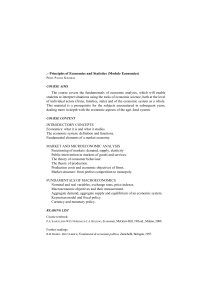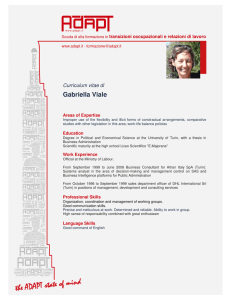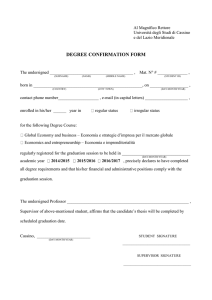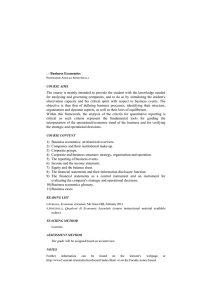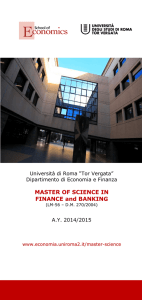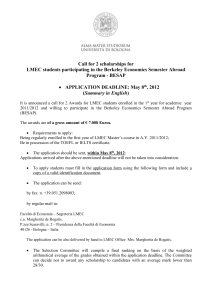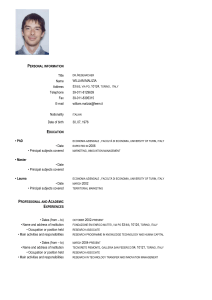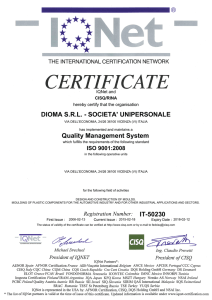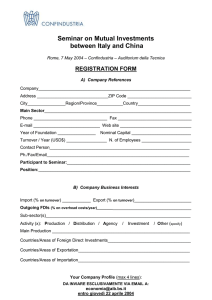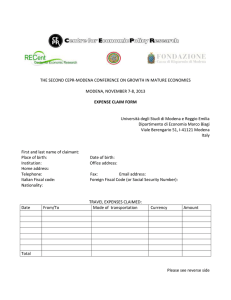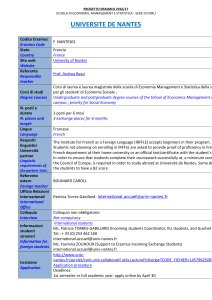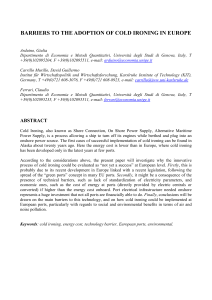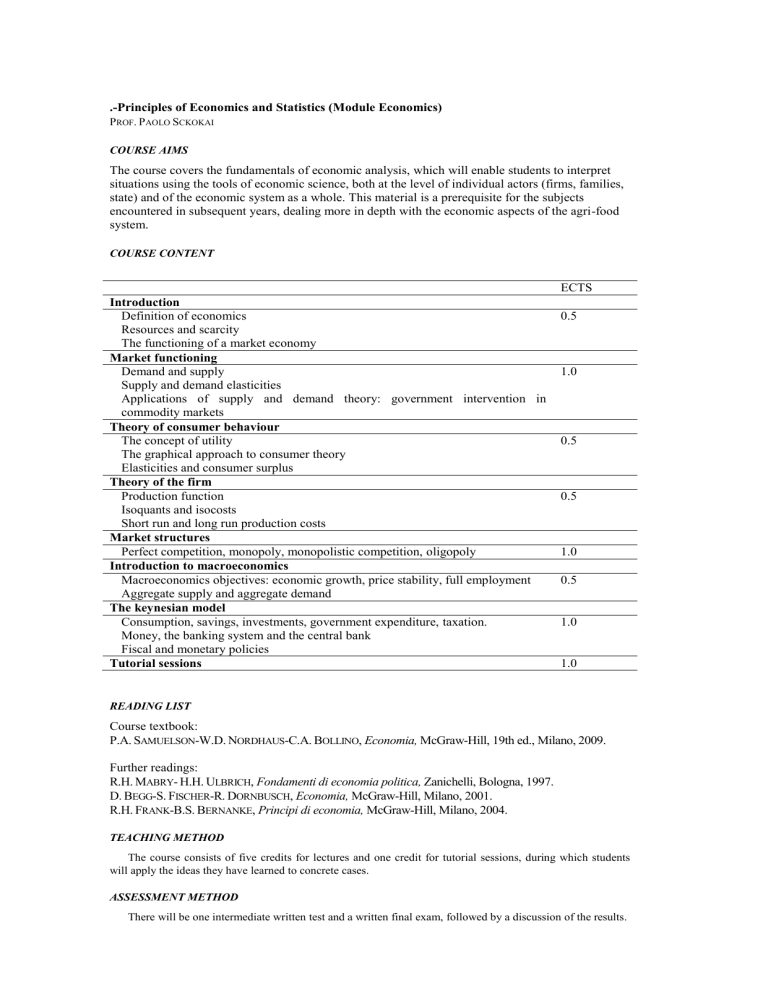
.-Principles of Economics and Statistics (Module Economics)
PROF. PAOLO SCKOKAI
COURSE AIMS
The course covers the fundamentals of economic analysis, which will enable students to interpret
situations using the tools of economic science, both at the level of individual actors (firms, families,
state) and of the economic system as a whole. This material is a prerequisite for the subjects
encountered in subsequent years, dealing more in depth with the economic aspects of the agri-food
system.
COURSE CONTENT
ECTS
Introduction
Definition of economics
Resources and scarcity
The functioning of a market economy
Market functioning
Demand and supply
Supply and demand elasticities
Applications of supply and demand theory: government intervention in
commodity markets
Theory of consumer behaviour
The concept of utility
The graphical approach to consumer theory
Elasticities and consumer surplus
Theory of the firm
Production function
Isoquants and isocosts
Short run and long run production costs
Market structures
Perfect competition, monopoly, monopolistic competition, oligopoly
Introduction to macroeconomics
Macroeconomics objectives: economic growth, price stability, full employment
Aggregate supply and aggregate demand
The keynesian model
Consumption, savings, investments, government expenditure, taxation.
Money, the banking system and the central bank
Fiscal and monetary policies
Tutorial sessions
0.5
1.0
0.5
0.5
1.0
0.5
1.0
1.0
READING LIST
Course textbook:
P.A. SAMUELSON-W.D. NORDHAUS-C.A. BOLLINO, Economia, McGraw-Hill, 19th ed., Milano, 2009.
Further readings:
R.H. MABRY- H.H. ULBRICH, Fondamenti di economia politica, Zanichelli, Bologna, 1997.
D. BEGG-S. FISCHER-R. DORNBUSCH, Economia, McGraw-Hill, Milano, 2001.
R.H. FRANK-B.S. BERNANKE, Principi di economia, McGraw-Hill, Milano, 2004.
TEACHING METHOD
The course consists of five credits for lectures and one credit for tutorial sessions, during which students
will apply the ideas they have learned to concrete cases.
ASSESSMENT METHOD
There will be one intermediate written test and a written final exam, followed by a discussion of the results.
NOTES
Further information can be found on the instructor's webpage or on the Faculty notice board.
OFFICE HOURS
Students can meet the instructor after class in the “Dipartimento di Economia Agro-alimentare”
.- Principles of Economics and Statistics (Module Statistics)
PROF. PAOLO SCKOKAI
COURSE AIMS
The course provides the students with the theoretical background and the basic practical tools for
presenting, describing and analysing data, with a particular attention to the analysis of the relationships
between variables and to the role of statistical inference.
COURSE CONTENT
ECTS
Descriptive statistics (univariate)
Quantitative and qualitative data
Frequency distributions: graphs and data presentation
Measures of central tendency and dispersion
Descriptive statistics (bivariate)
Two-entry tables
Independence and association between variables
Correlation
Probability and random variables
Probability
Discrete and continue random variables
The binomial distribution and the normal distribution
Statistica inferenziale
Estimation and estimators
Confidence intervals
Hypothesis testing
The sampling distributions (t, chi-square and F)
Inference on one or two populations
Tests and confidence intervals on mean/difference between means
Tests and confidence intervals on variance/variance ratio
Tests and confidence intervals on proportions
The regression model
Two-variable regression model (calculations and inference)
Multiple regression model (calculations and inference)
Tutorial sessions
1.0
0.5
1.0
0.5
1.0
1.0
1.0
READING LIST
- Reference texts
Triola, M.M., M.F. Triola, (2009), Statistica per le discipline biosanitarie, Pearson Paravia Bruno Mondadori,
Milano.
Pelosi, M.K., T.M. Sandifer, P. Cerchiello, P. Giudici, Introduzione alla statistica, McGraw-Hill Companies,
Milano, 2009.
TEACHING METHODS
The course is organized with 5 credit units of class lectures and 1 credit unit of class exercises, in which
further applications on lectures’ notions will be presented. Solving exercises is required for passing the final
examination.
COURSE ASSESSMENT
Final evaluation is based on a written exam followed by an oral discussion.
NOTES
Further information can be found on the instructor's webpage or on the Faculty notice board.
OFFICE HOURS
Students can meet the instructor after class in the “Dipartimento di Economia Agro-alimentare”

